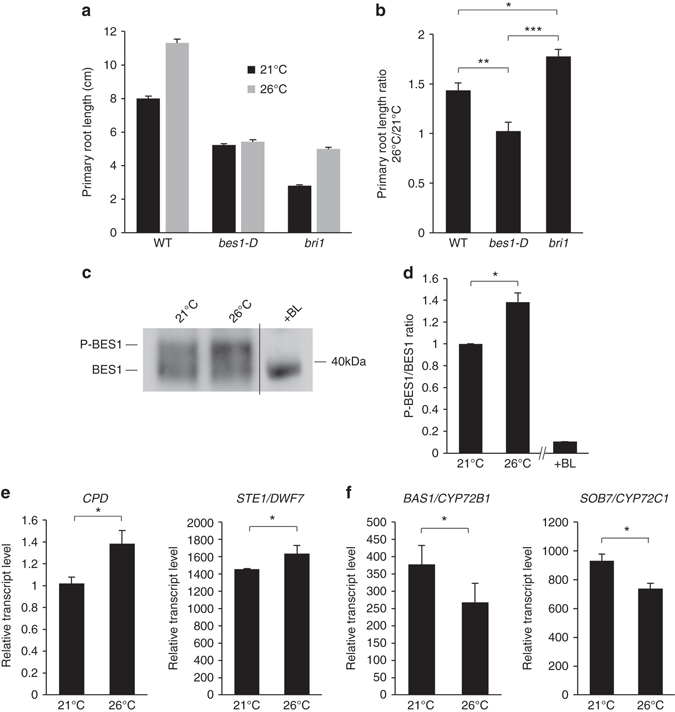Fig. 4.

Brassinosteroid signaling regulates root responses to elevated ambient temperature. a Primary root length of 15-day-old wild-type (WT) or brassinosteroid-related mutant plants grown at 21 or 26 °C (mean ± s.d., n = 25). b Ratio of primary root length from plants grown at 26/21 °C as in a (mean ± s.d., n = 3). The asterisks indicate a statistically significant difference (Kruskal–Wallis; *P < 0.01; **P < 0.001; ***P < 0.0001). c Western blot analyses monitoring the phosphorylation state of BES1 in wild-type plants grown at 21 or 26 °C using anti-BES1 antibodies. A root protein extract from plants treated with brassinolide (BL) is used as a control for BES1 dephosphorylation. A representative blot is shown. d Ratio of phosphorylated BES1 (P-BES1) over BES1 levels (mean ± s.d., n = 4). The asterisk indicates a statistically significant difference (Mann–Whitney; *P < 0.01; **P < 0.001; ***P < 0.0001). e mRNA accumulation of the brassinosteroid feedback-regulated CPD and STE1/DWF7 genes in roots from wild-type plants grown at 21 or 26 °C (mean ± s.d., n = 3). The asterisk indicates a statistically significant difference (Mann–Whitney, P < 0.01). f mRNA accumulation of the BAS1/CYP72B1 and SOB7/CYP72C1 brassinosteroid metabolism genes in roots from wild-type plants grown at 21 or 26 °C (mean ± s.d., n = 3). The asterisk indicates a statistically significant difference (Mann–Whitney, P < 0.01)
